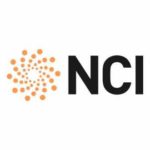The call for time on Australia’s largest supercomputers opens today and will remain open until 26 October 2020. The National Computational Merit Allocation Scheme (NCMAS) is the allocation scheme for access to Australian national supercomputing facilities for meritorious research. The NCMAS provides access, based on research and computational merit, for researchers at Australian universities and […]
Gadi – Australia’s Newest Supercomputer
Allan Williams from NCI gave this talk at the Perth HPC Conference. “With 3,200 nodes, Gadi will power some of Australia’s most crucial research, seeking to solve some of the most complex and pressing challenges facing the world currently. Researchers from organizations including the CSIRO, Geosciences Australia, and the Bureau of Meteorology will benefit from faster speeds and higher capacity compared to the existing supercomputer.”
Altair PBS Works to Optimize Gadi Supercomputer at NCI
Supercomputing in Australia is slated to get a major boost this November with the deployment of the Fujitsu-made “Gadi” supercomputer, estimated to be 10 times faster than its predecessor. NCI will use Altair’s PBS Works software suite — including Altair Control, Altair Access, Altair Monitor, and Altair PBS Professional — to optimize job scheduling, manage workloads, and perform detailed analysis on the new Gadi system. “This new machine will keep Australian research and the 5,000 researchers who use it, at the cutting edge. It will help us get smarter with our big data. It will add even more brawn to the considerable brains already tapping into NCI.”
Fujitsu to Deploy Gadi Supercomputer at NCI in Australia
Today Fujitsu announced a contract to upgrade the Australia’s fastest supercomputer at NCI. Called “Gadi,” the new supercomputer will replace the NCI’s current supercomputer, Raijin, which was also provided by Fujitsu back in 2012. “The upgrade of this critical infrastructure will see Australia continue to play a leading role in addressing some of our greatest global challenges. This new machine will keep Australian research and the 5,000 researchers who use it at the cutting-edge.”






